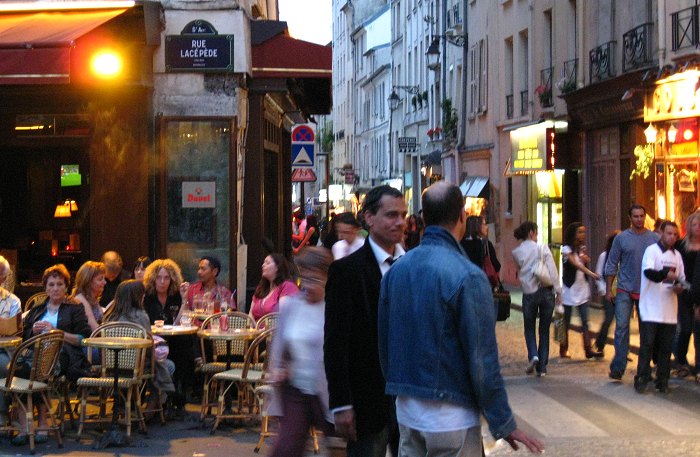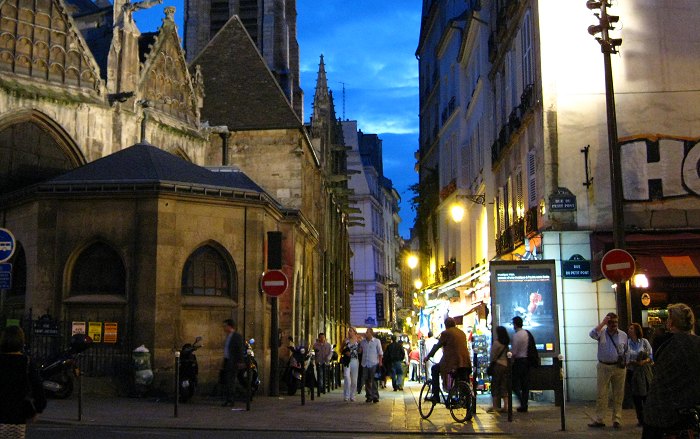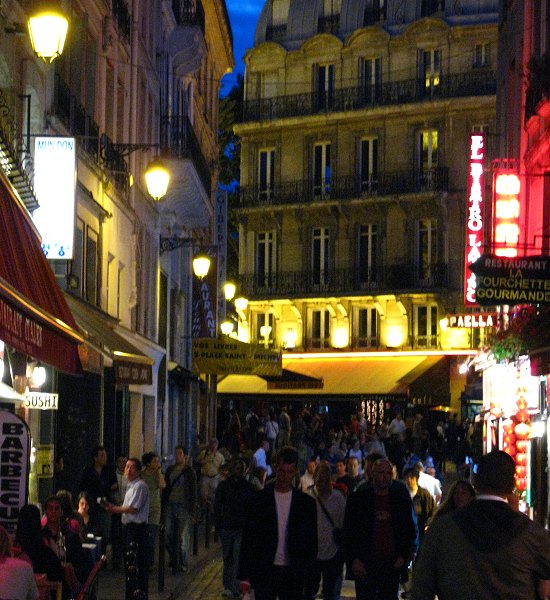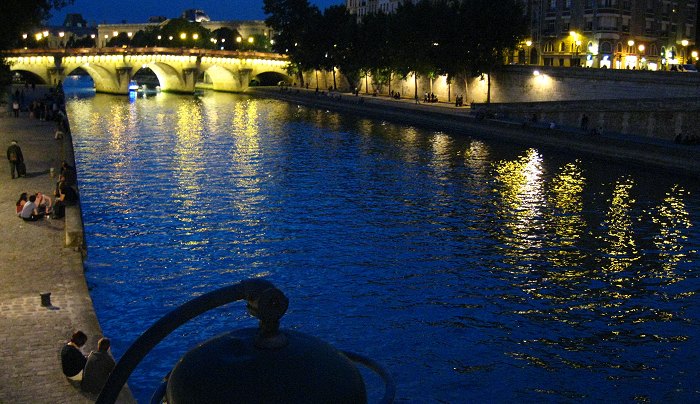Paris is a wonderful place to walk – we walked at least 10 miles every day, taking in the sights and sounds.
One of our favorite places was along the Seine, where there are boats to watch, birds fishing over the water, and people strolling or lounging along the banks.
These are bateaux-mouches – glass covered boats that take sightseers on rides up and down the river.

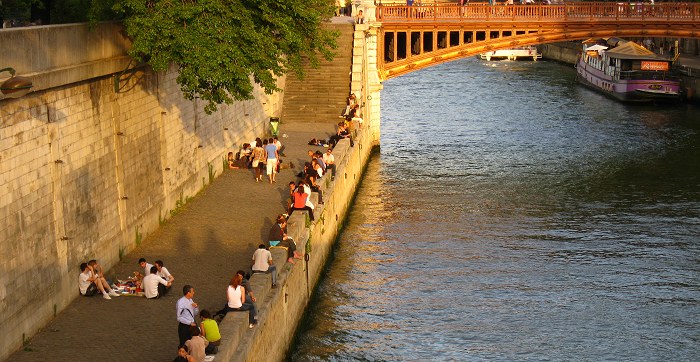
Houseboats parked along the banks of the river.
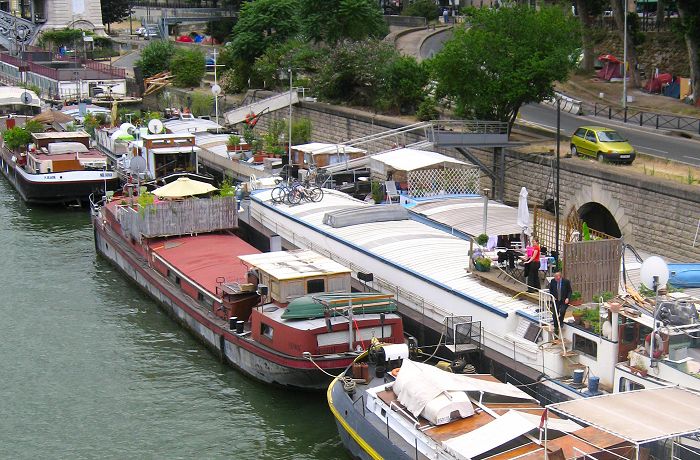
The garden in the foreground is on another houseboat.
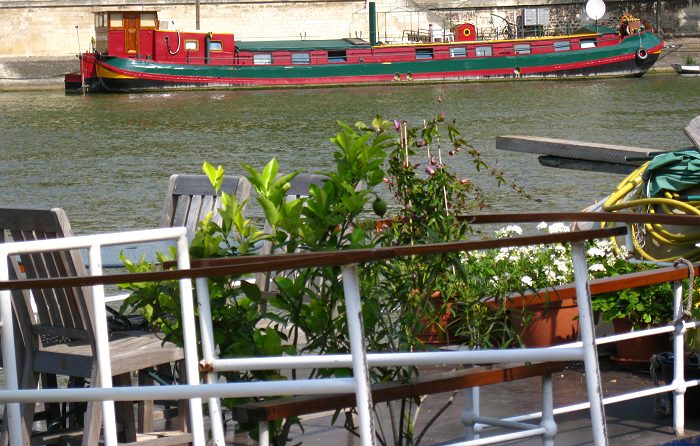
The bridges over the river are busy places. Here’s one of the contemporary ones.
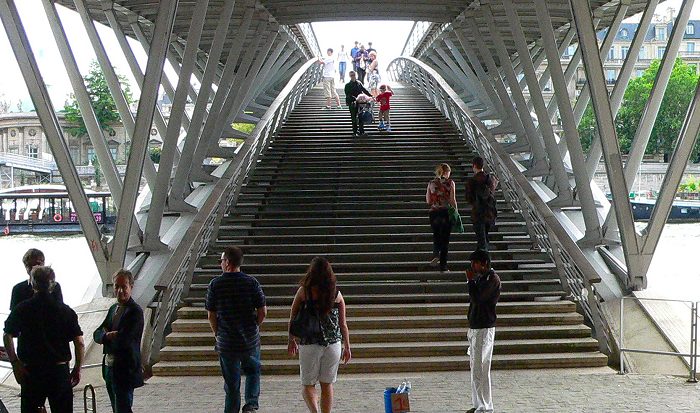
This one is a foot bridge – usually full of young people drinking wine and having picnics.

The scene on the bridge. The boxes along the sides had a display of photographs of Palestine.
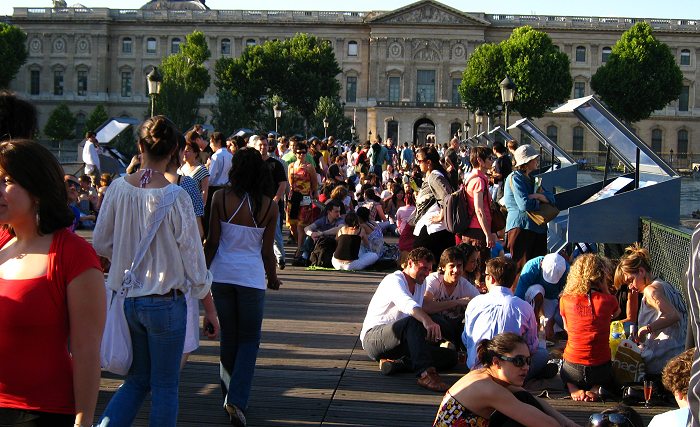
Pigeons are everywhere. There are Common Rock Doves – the same species we have in the US. And Wood Pigeons, a much larger species that lives in Europe and Western Asia. They’re about the size of a Grouse. They make a cooing noise, similar to Rock Doves, but louder and much more insistent.
Wood Pigeons (Columba palumbus)
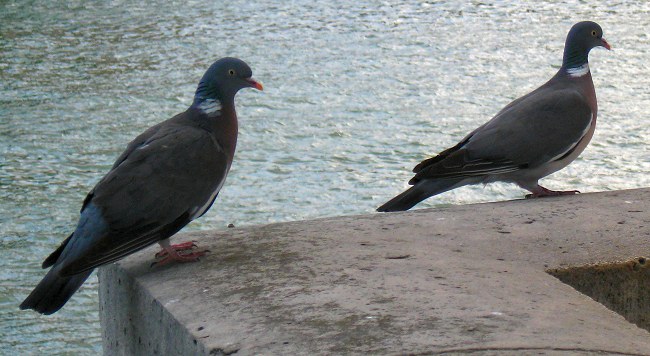
Canal St. Martin flows into the city from the northeast, connecting to the Seine near Place de la Bastille. The canal was built in 1825 to supply the city with water, and now is used mostly for pleasure cruises, and as a place to walk along the water.

One of the locks
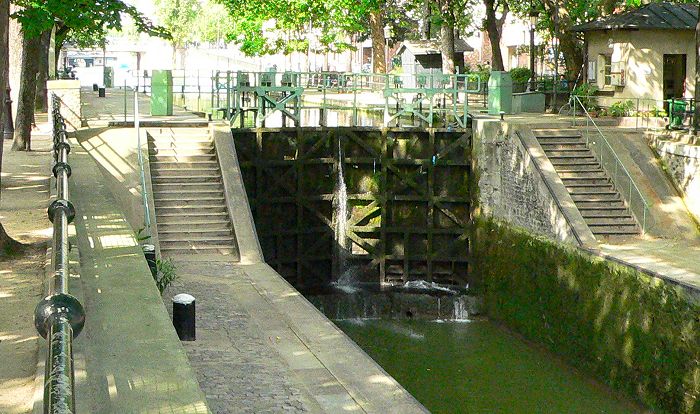
The gardens along the canal are a little less formal than most of the other public gardens – I liked that.
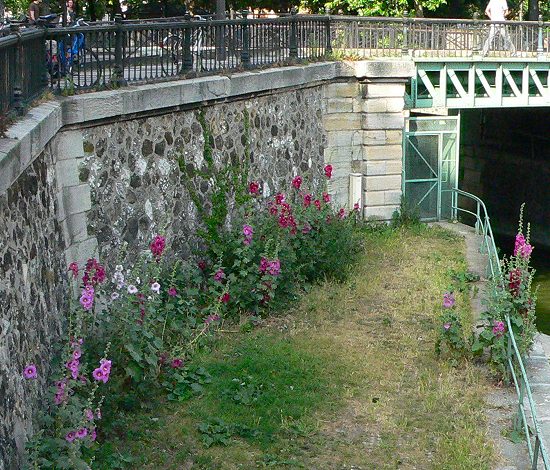
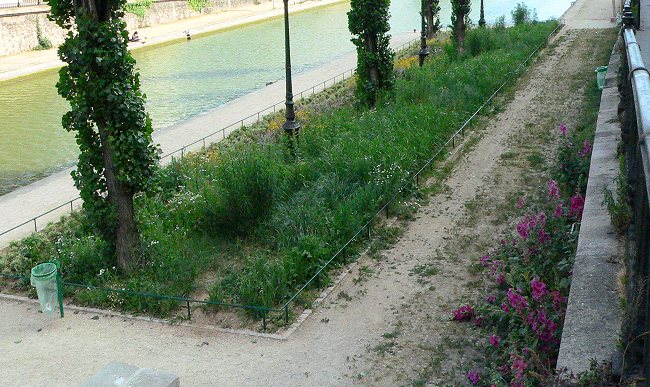
Jardin de Plantes is a botanic garden which was originally planted in 1626. It has beds of plants organized by family, an alpine garden, and some of the oldest trees in Paris.
This is Jardins de Plantes, looking from the Natural History Museum.
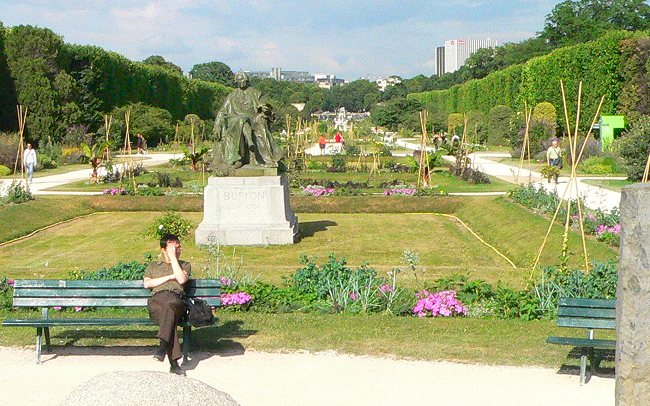
This is looking the other direction – toward the Museum.

Some of the garden beds.

The Natural History Museum had a special exhibit on Geology, and they had made two copies of a geological map of France. One was a huge map, in color, hanging on the side of the building.
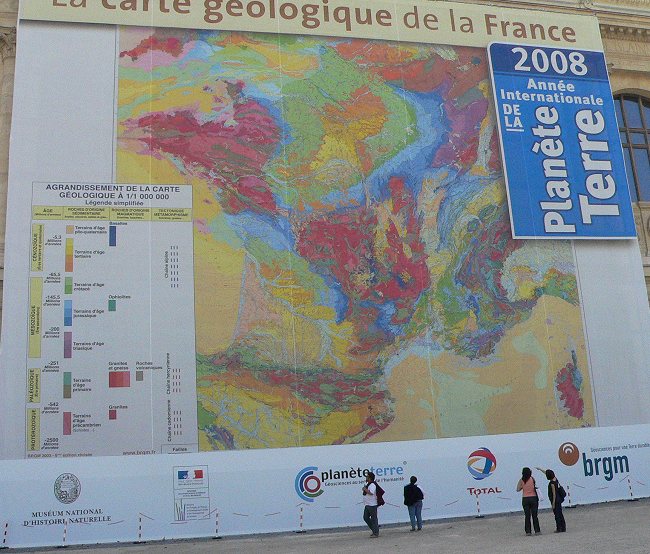
The other was set into the terrace of the museum, and people could walk on it and see places in detail.
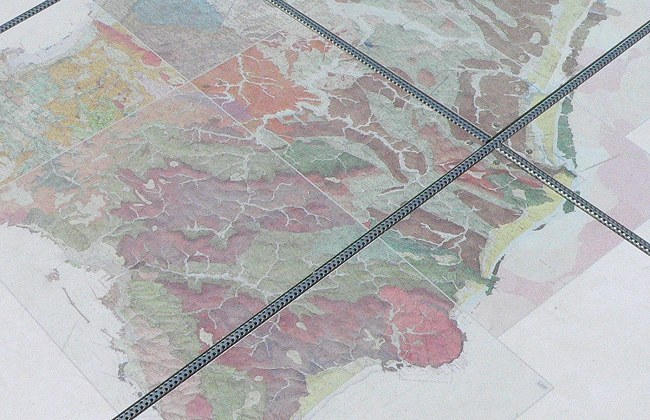

Here I am, inspecting the map.
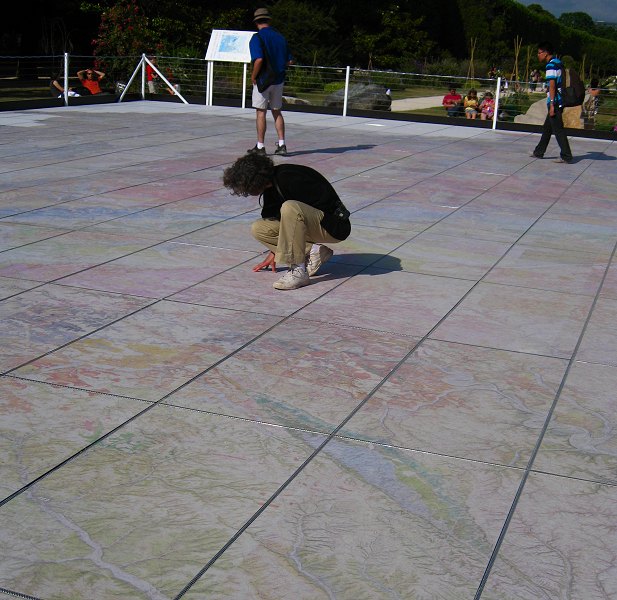
These are two views of the alpine garden – it wasn’t open, but it looked like a fascinating place.
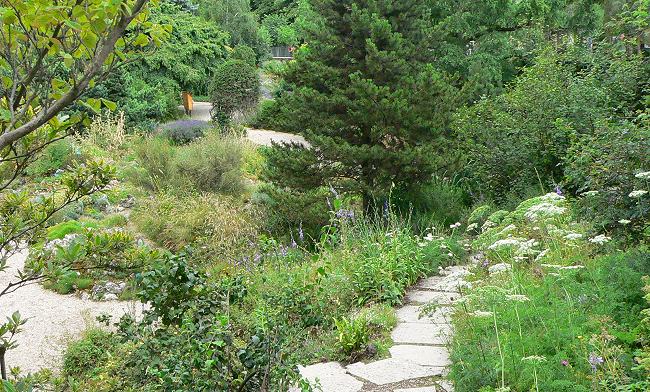

These are the greenhouses – also not open to the public.
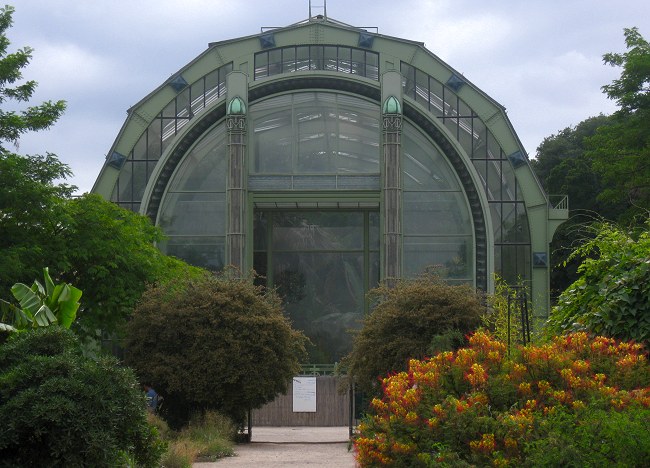
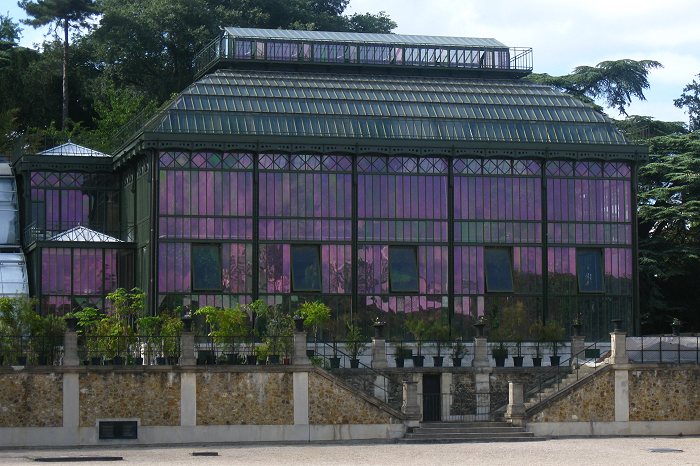
One section of the garden has a small planted field of native vegetation.
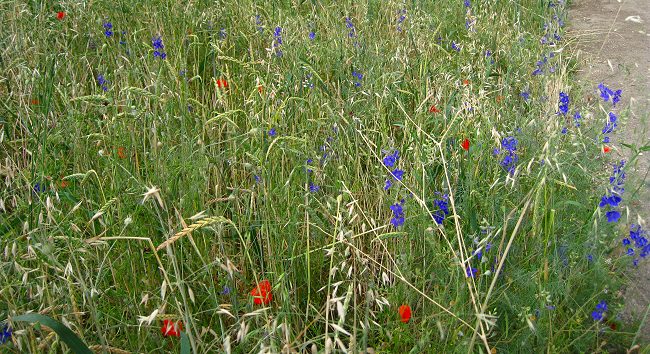
One end of the garden has a steep hill with a maze and some ancient trees. This one is a Cedar of Lebanon (Cedrus libani ), planted in 1734.
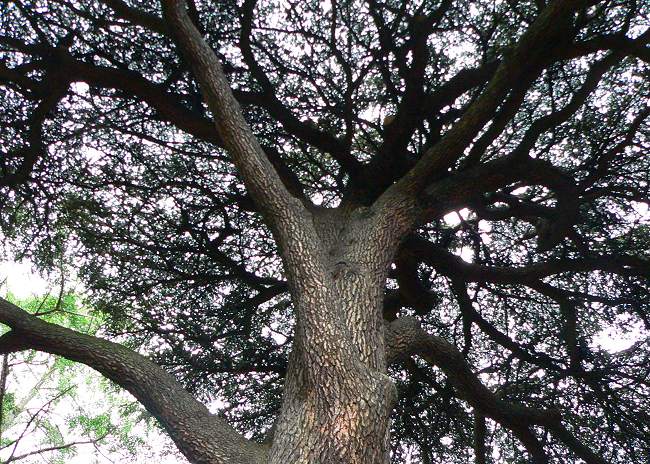
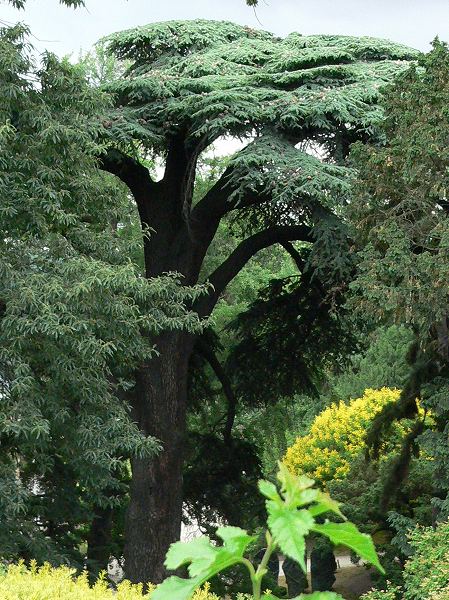

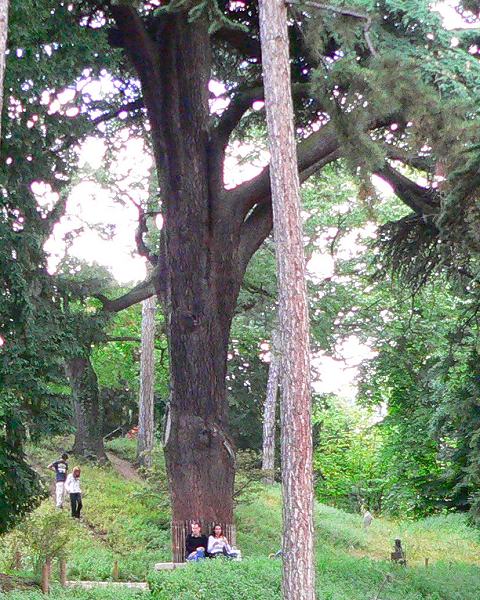
On top of the hill is a metal gazebo – the oldest metal structure in Paris. It’s beautifully made, with interesting details in the metalwork.

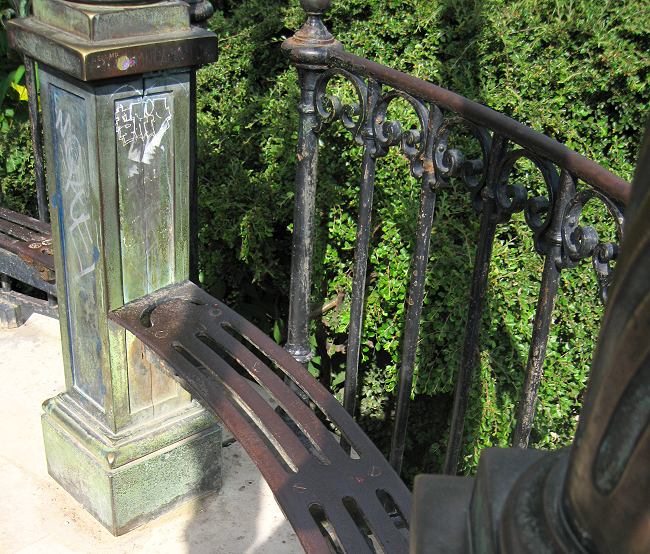

Parks in Paris are very heavily used. At all hours, grassy lawns are covered with groups of people talking and having picnics.

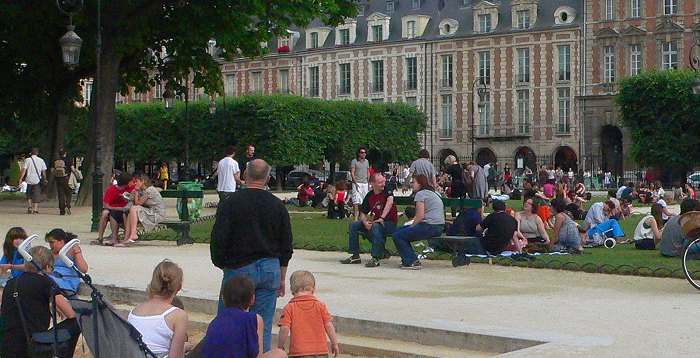

Walkways are usually dusty gravel, full of strolling, talking people. This is Jardin Luxembourg – one of the biggest of the city parks – with some girls being filmed.
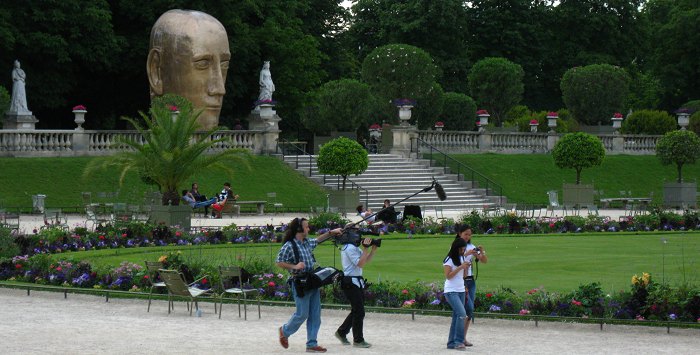
In the Tuileries, the garden west of the Louvre, there’s a metal sculpture of a fallen tree, with a garden planted around it.
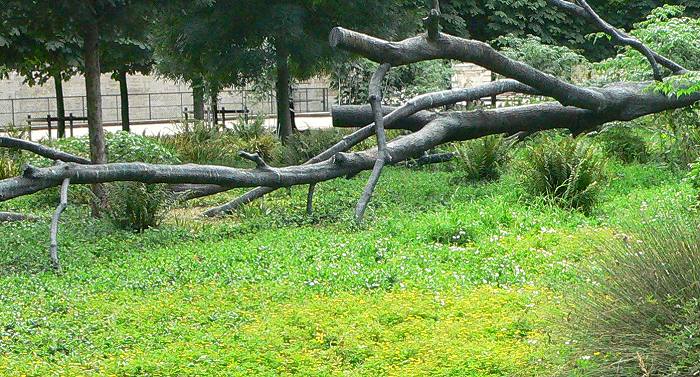
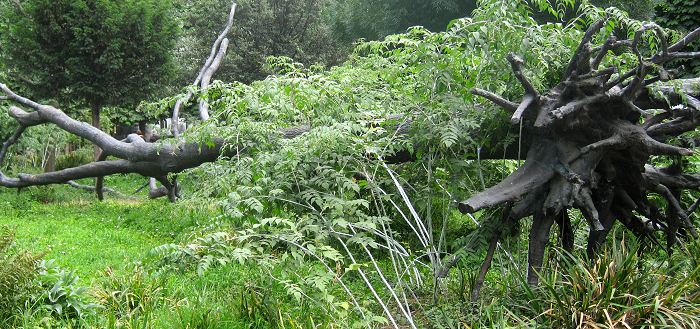
We saw several gardens with artificial lakes and grottos. This one is in Parc du Champs de Mars, next to the Eiffel Tower.
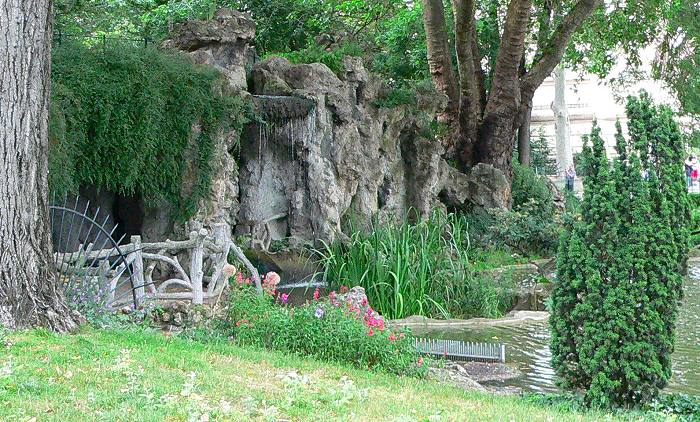
I found my first butterfly on a walkway next to the Eiffel Tower. A Red Admiral – the same species as we have in the US.

Here I am, in my usual butterfly-photographing pose.
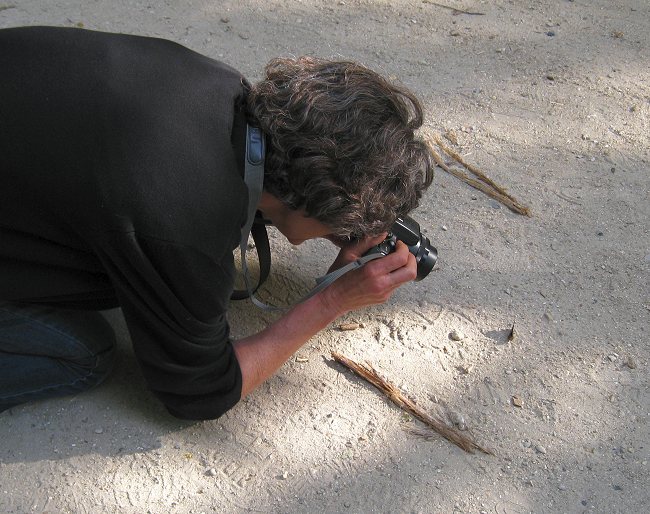
Another familiar butterfly – a Cabbage White in a garden in Montmartre.
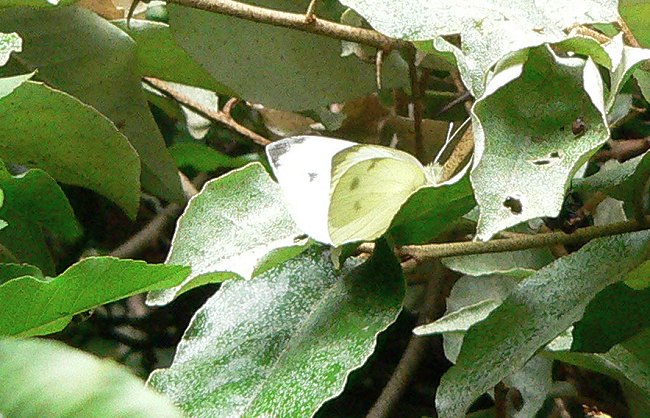
Cemeteries are also used as parks in Paris. This is Montparnasse Cemetery. It’s very quiet and shady even though it’s just a block from some very busy streets.
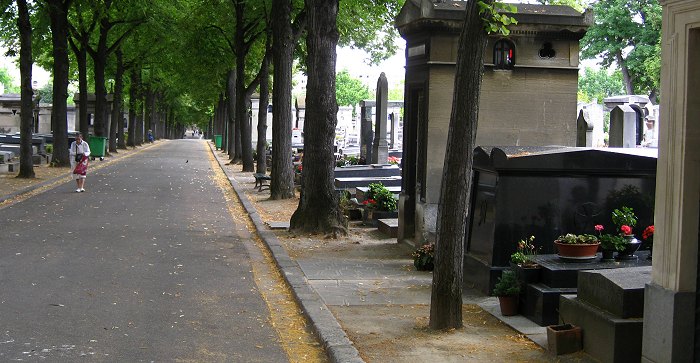
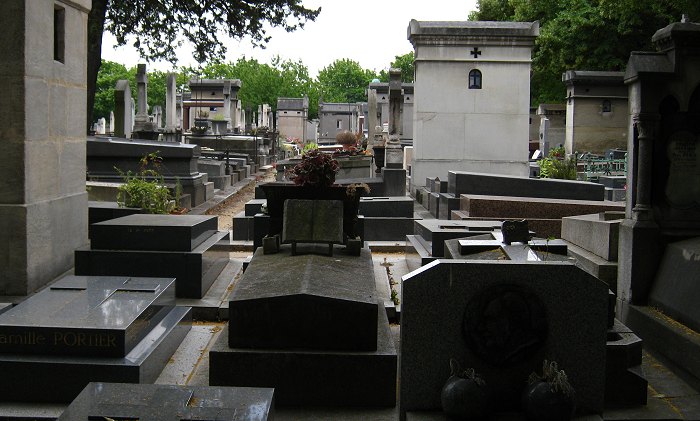
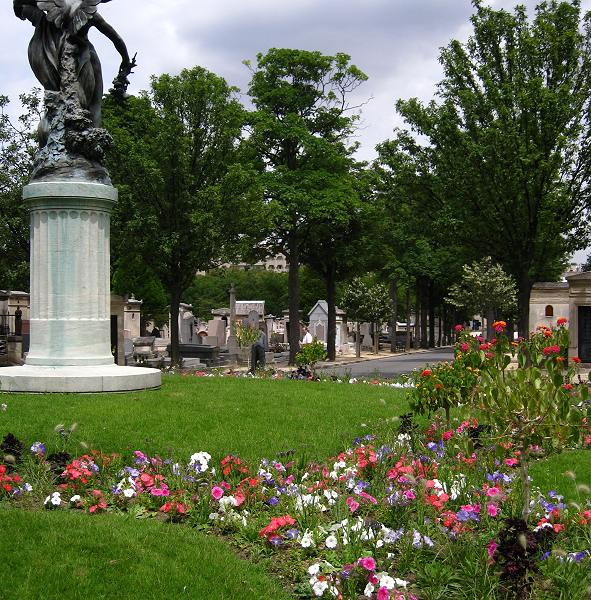
Shop windows in Paris have wonderful displays of just about everything you can imagine. We loved looking at the variety and arrangements of things. Here are some of the things we saw.
Dishes
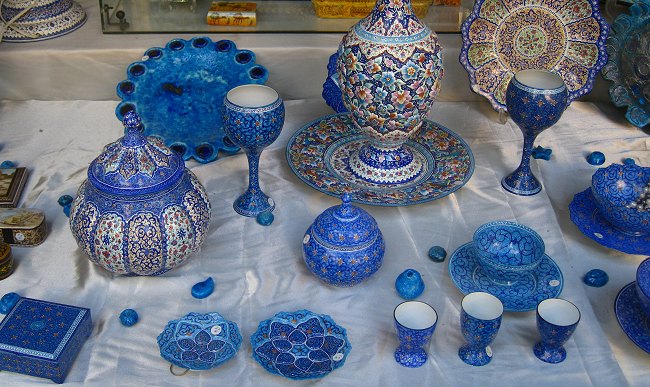
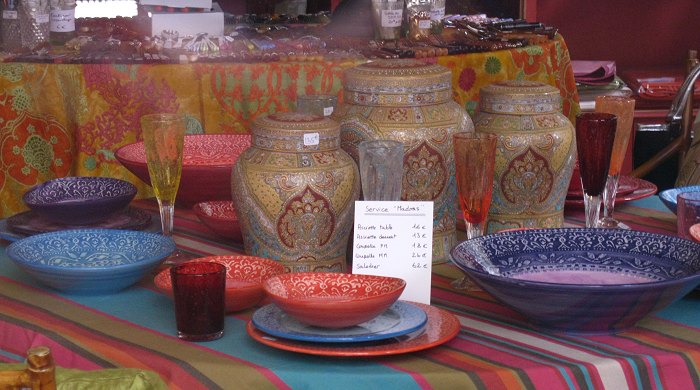

Paperweights
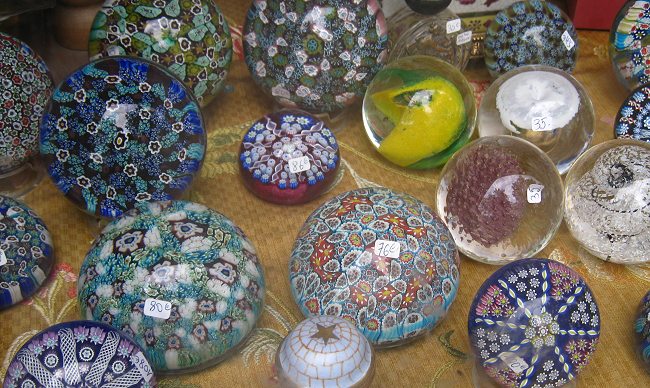
I don’t know what these are – maybe doll dresses?
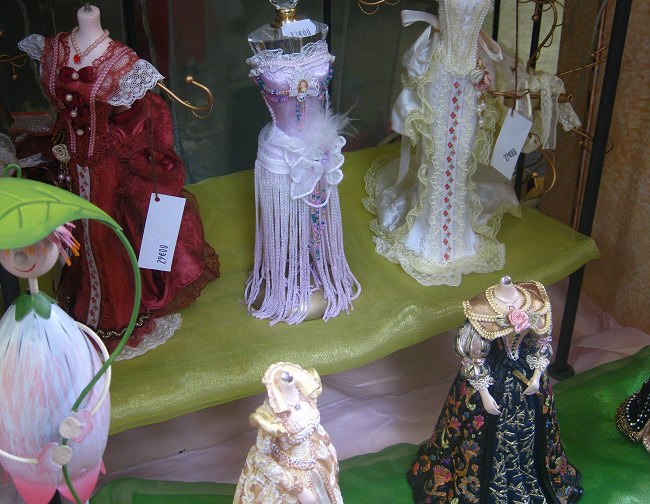
Keys

More Keys
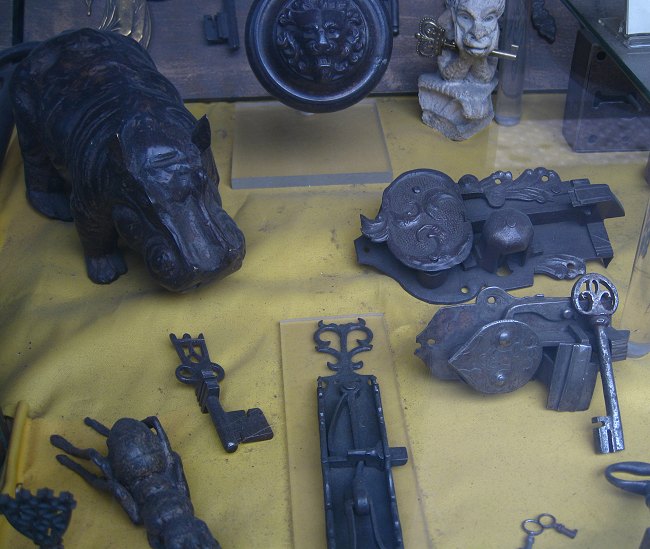
Perfume

Shells
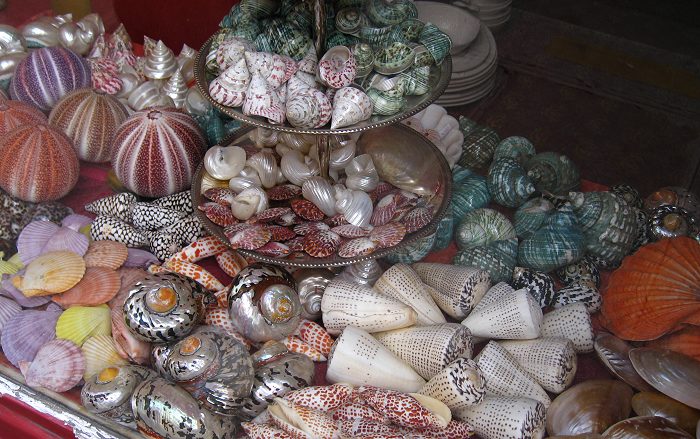
Sinks
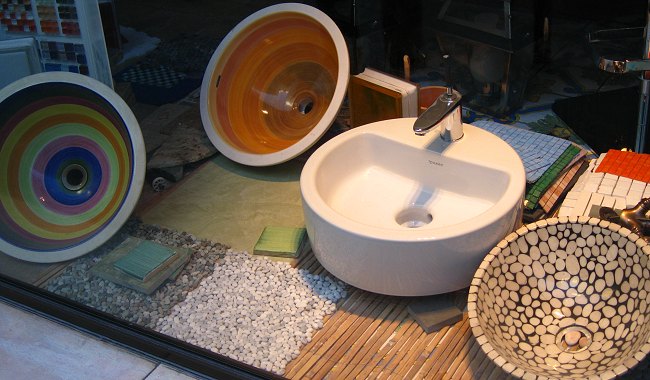
I especially liked these crocheted necklaces.


I also liked the displays of the flowers for sale along the street.
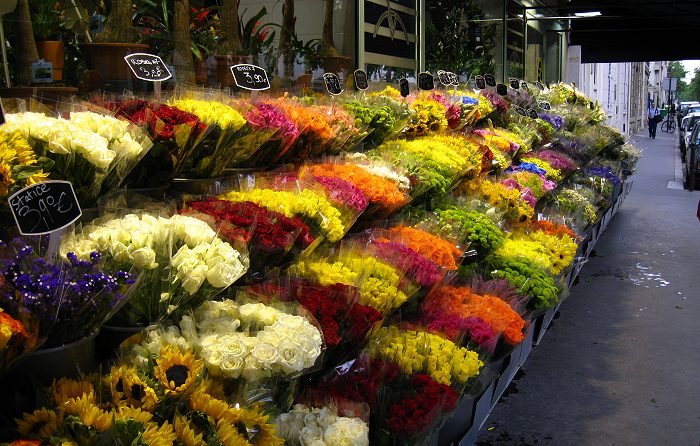
Flower shops sell odd, interesting plants that I’ve never seen for sale in the US. These are Pitcher Plants (Sarracenia sp.)

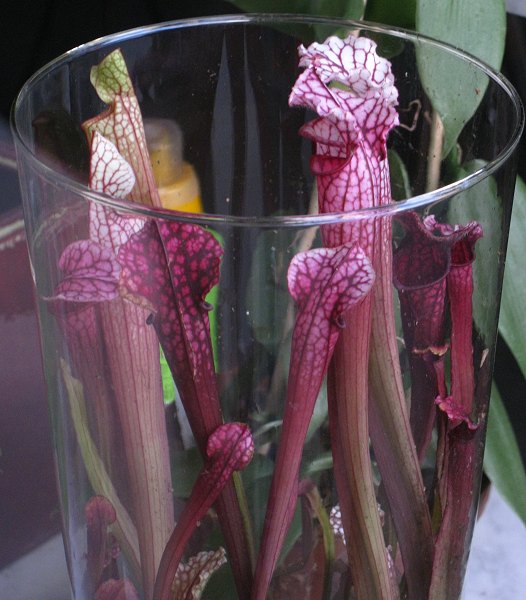
A shop selling vegetables

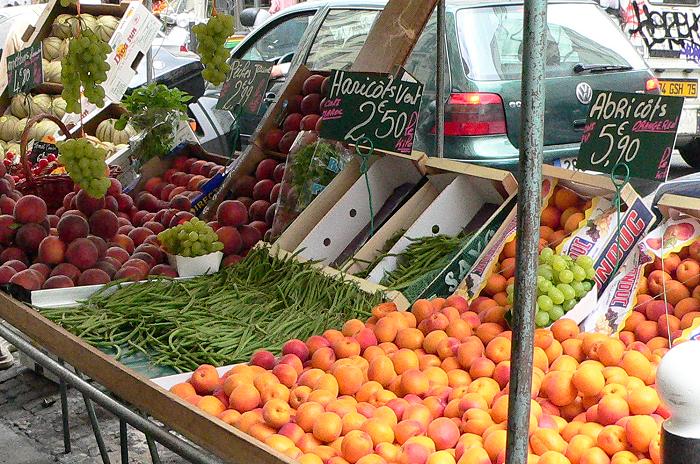
Another shop selling cheese
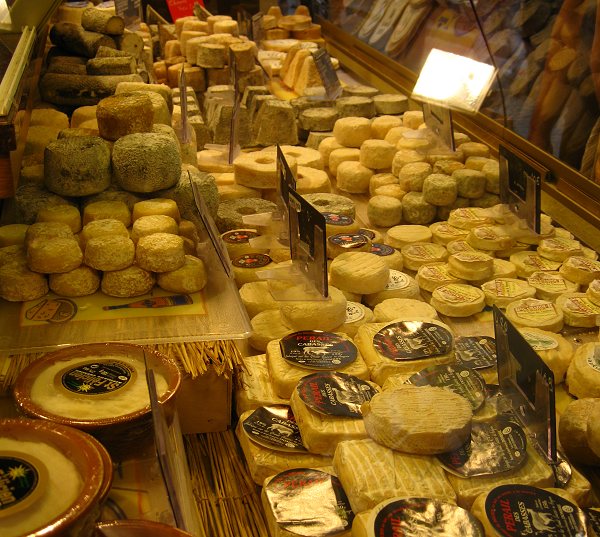
Many of the Paris streets are paved with stones. Some are in straight lines, some make other kinds of patterns.

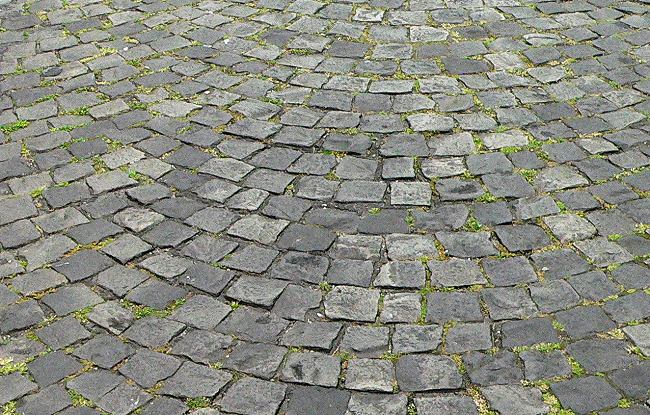
La Defense is a much newer part of the city where most of the skyscrapers have been built. Even in this new area, the outdoor public spaces are full of people.

Looking from La Defense to the Arc de Triomphe

A wonderful fountain/sculpture in La Defense
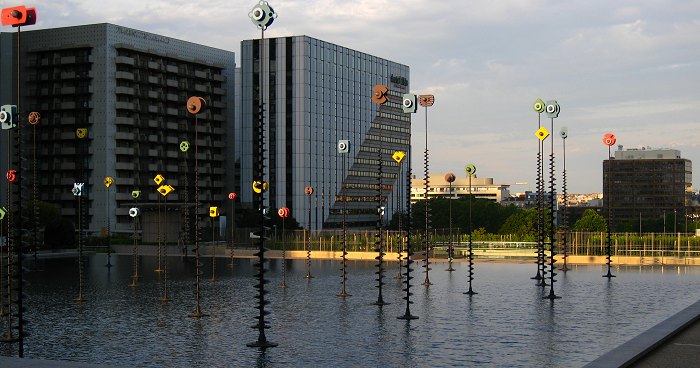
Our last day in Paris we went to the top of Montparnasse Tower – a skyscraper that’s the tallest building in Paris except for the Eiffel Tower. It’s in an area with no other tall buildings, and the roof is a flat, open-air observation deck with a 360-degree view of the city. It was a great thing to discover on our last day – it was fun to look at all the places we had been, but we wouldn’t have walked so much if we had realized how far apart some of the places were.
This is one of the views from Montparnasse Tower – including the Eiffel Tower, Les Invalides, and our hotel – half way between the two.

This is a view of the city and Montparnasse Tower taken from the opposite side of the city – from Sacre Coeur a few days before.

We couldn’t figure out when people in Paris slept. People would be sitting talking at cafes, or walking briskly to work, early every morning. And the streets and cafes at night are always full of people. Dinner isn’t even served until at least 8pm, and most restaurants don’t close until after midnight.
Here are some late night scenes – it didn’t get really dark until about 10, so some of the lighter ones were taken at about that time.
